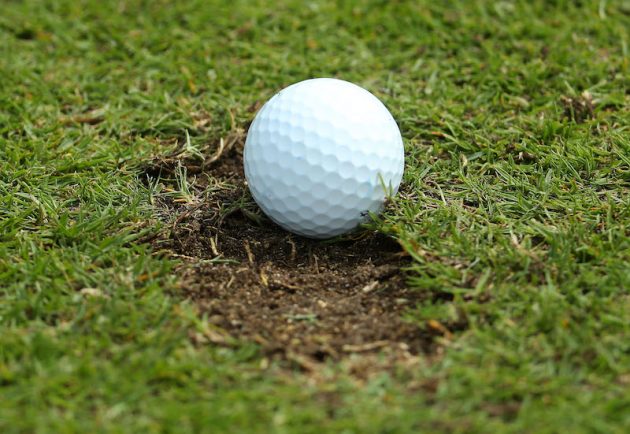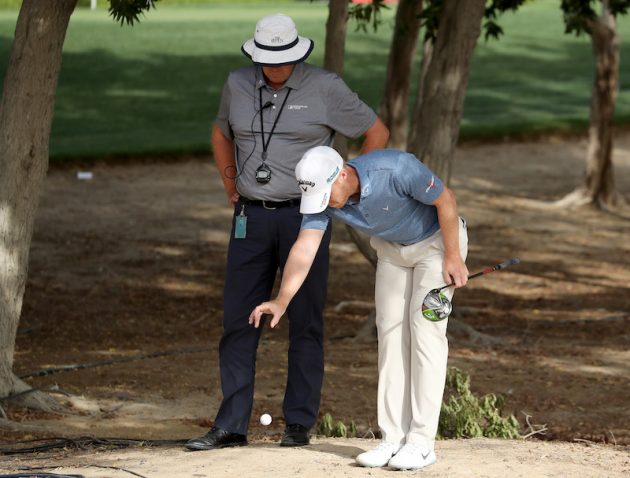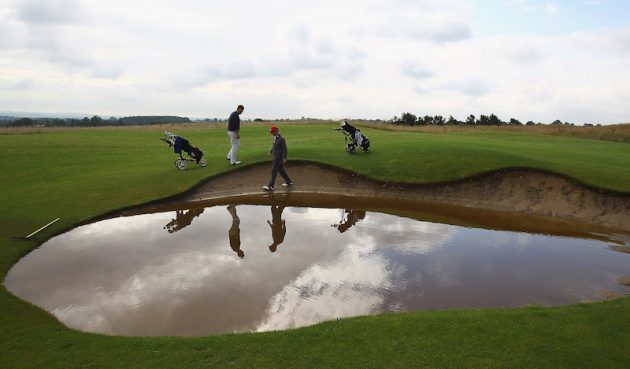7 Golf Rules That Need To Change?
Neil Tappin and Jezz Ellwood suggest their 'golf rules that need to change', discussing whether or not they could or should change and why...


Neil Tappin and Jezz Ellwood suggest their 'golf rules that need to change', discussing whether or not they could or should change and why...
7 Golf Rules That Need To Change?
The Rules of Golf can be confusing and sometimes feel unfair. In this video and article, Neil Tappin talks with Golf Monthly's Jezz Ellwood about seven Rules they feel could or should change to potentially improve things.
WATCH: 7 Golf Rules That Need To Change
7 Golf Rules That Need To Change?
1. Provisional ball rule (18.3b)
Jezz suggests that the Rule might be a lot clearer if it stopped at a certain point in the wording of Rule 18.3b.
That Rule says, "You must use the word 'provisional'...", but then goes on to say, "or otherwise clearly indicate that you are playing a ball provisionally under 18.3". This second statement seems to introduce an element of greyness into something that could be black and white if it just stopped after the first bit.
Subscribe to the Golf Monthly newsletter to stay up to date with all the latest tour news, equipment news, reviews, head-to-heads and buyer’s guides from our team of experienced experts.
In the Interpretations on the Rules, you'll see that phrases implying doubt are good enough (e.g. I'm going to play another just in case). But whatever you say, it must be obvious that your intent is to hit a provisional ball.
2. Should you get free relief from a divot?
Neil highlights that many golfers feel it's unfair that their ball has come to rest in another player's divot and therefore want free relief.

Yes, it does seem unfair, but the problem is how do you define a divot? There is certainly no definition within the Rules. Unless you have a watertight definition of what is and isn't a divot, everyone will be playing by different yardsticks.
And many of us do get free relief from divots for several months via the preferred lies/Winter rules in force in the off-season.
3. Relief from a wrong green must be taken (Rule 13.1f)
Jezz feels the Rule could be changed slightly so that taking relief in this scenario is not always compulsory. If two greens lie very close together and you're going to use a putter, could that not be allowed?

The underlying reason for the Rule is to prevent damage to the green, but you aren't going to damage it with a putter. Would it not speed up play just by allowing people to play that next shot with a putter rather than going through the relief process?
It could potentially prevent damage to the fringe and aprons too. You wouldn't then potentially take a divot if you decide to chip or pitch having taken relief.
4. The knee-high drop
When the knee-high drop came in at the start of 2019, many felt it was a little awkward.

As such, Neil thinks this could just be altered to just say 'drop the ball'. This was certainly under consideration at one stage. Others have suggested the drop should be between knee and shoulder height or knee and waist height.
One of the advantages of knee-high, however, was a greater chance of the ball staying in the relief area on the first drop.
And where would to draw the line if you did just say 'drop'? Does half a millimetre constitute a drop when you would virtually be placing it?
5. DQ in strokeplay if you don’t correct error before next tee shot for playing from outside teeing area (Rule 6.1b)
Jezz feels there is some inconsistency between playing from the wrong place in the general area under Rule 14.7b and playing from outside the teeing area.
In the general area, you can continue with a two-shot penalty if you play from a wrong place unless it’s a serious breach. That's defined as giving you a significant advantage over playing from the correct place.
Only for a serious breach would you then have to correct the error. If you play from an inch in front of the tee markers, you get the two-shot penalty, which is fair enough. But here you must always correct the error by playing again from within the teeing area before teeing off on the next hole. If you don't, you'll be disqualified.
Is that really a serious enough breach to bring a potential DQ into the equation? Is the two-shot penalty not enough on its own? There just seems a slight inconsistency here between the teeing area and the general area.
6. No free relief if bunker is completely flooded
Neil feels it is a little harsh that taking relief outside a completely flooded bunker will cost you a penalty shot.

Yes, it does seem unfair on the face of it. The counter argument is that you've hit your ball into something that is supposed to be a problem. You'd be getting away scot-free if you get a free drop.
Yes, some people are very good out of bunkers, but others are not. So at the moment, on balance, the rulemakers believe there should be a penalty.
And don't forget that in a bunker, you can take 'maximum available relief'. So even if you can't take complete relief within the bunker, if there were anywhere you could play from where the water is shallower or your feet might still be in it, you are allowed to do that with no penalty.
And for most golfers, how often does this - or has this - happened? Many will struggle to remember the last time.
7. Moving loose impediments
Jezz's final one just comments on the Tiger Woods' boulder incident in Phoenix in 1999. You may remember spectators helping him move a large rock out of the way to allow a clear shot.

The boulder, despite clearly not being 'loose', was still classed as a loose impediment under the Rules. Tiger did nothing wrong in enlisting outside assistance.
But could the Definition of loose impediment not be tweaked slightly to say only the player's side is allowed to move it? So the player and his or her caddie, or both players and caddies in a pairs event?
NEW FOR 2020 – FEATURED PRODUCTS
Golf Monthly is partnering with Titleist and FootJoy as our official golf ball, golf bag, footwear and apparel partners for this year.
Shop the featured FootJoy footwear and apparel worn in this video:
- Shop FootJoy Men’s shoes
- Shop FootJoy Men’s shirts
- Shop FootJoy Men’s pullovers/mid-layers
- Shop FootJoy Men’s jackets/outer-layers
- Shop FootJoy Men’s trousers
- Shop FootJoy Men’s gloves
- Shop FootJoy Men’s belts & accessories
- Find out more about the featured Titleist golf balls used in this video Discover Titleist Pro V1x balls
- Find out more about the featured Titleist golf bag used in this video Discover Titleist Stand Bags

Jeremy Ellwood has worked in the golf industry since 1993 and for Golf Monthly since 2002 when he started out as equipment editor. He is now a freelance journalist writing mainly for Golf Monthly. He is an expert on the Rules of Golf having qualified through an R&A course to become a golf referee. He is a senior panelist for Golf Monthly's Top 100 UK & Ireland Course Rankings and has played all of the Top 100 plus 91 of the Next 100, making him well-qualified when it comes to assessing and comparing our premier golf courses. He has now played 1,000 golf courses worldwide in 35 countries, from the humblest of nine-holers in the Scottish Highlands to the very grandest of international golf resorts. He reached the 1,000 mark on his 60th birthday in October 2023 on Vale do Lobo's Ocean course. Put him on a links course anywhere and he will be blissfully content.
Jezz can be contacted via Twitter - @JezzEllwoodGolf
Jeremy is currently playing...
Driver: Ping G425 LST 10.5˚ (draw setting), Mitsubishi Tensei AV Orange 55 S shaft
3 wood: Srixon ZX, EvenFlow Riptide 6.0 S 50g shaft
Hybrid: Ping G425 17˚, Mitsubishi Tensei CK Pro Orange 80 S shaft
Irons 3- to 8-iron: Ping i525, True Temper Dynamic Gold 105 R300 shafts
Irons 9-iron and PW: Honma TWorld TW747Vx, Nippon NS Pro regular shaft
Wedges: Ping Glide 4.0 50˚ and 54˚, 12˚ bounce, True Temper Dynamic Gold 105 R300 shafts
Putter: Kramski HPP 325
Ball: Any premium ball I can find in a charity shop or similar (or out on the course!)